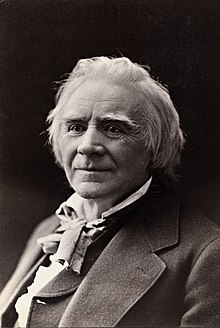Ole Bull
| Ole Bull | |
|---|---|
 |
|
| Background information | |
| Birth name | Ole Bornemann Bull |
| Born | 5 February 1810 |
| Origin | Bergen, Norway |
| Died | 17 August 1880 (aged 70) |
| Genres | Classical |
| Occupation(s) | Musician |
| Instruments | Violin |
Ole Bornemann Bull (Norwegian pronunciation: [ˈu:lə ˈbʉl]; 5 February 1810 – 17 August 1880) was a Norwegian virtuoso violinist and composer.
Bull was born in Bergen, Norway. He was the eldest of ten children of Johan Storm Bull (1787–1838) and Anna Dorothea Borse Geelmuyden (1789–1875). His brother, Georg Andreas Bull became a noted Norwegian architect. He was also the uncle of Edvard Hagerup Bull, Norwegian judge and politician.
His father wished for him to become a minister, but he desired a musical career. At the age of four or five, he could play all of the songs he had heard his mother play on the violin. At age nine, he played first violin in the orchestra of Bergen's theatre and was a soloist with the Bergen Philharmonic Orchestra. At eighteen, he was sent to the University of Christiania, but failed his examinations. He joined the Musical Lyceum, a musical society, and after its director Waldemar Thrane took ill, Bull became the director of Musical Lyceum and the Theater Orchestra in 1828. He also became friends with Henrik Wergeland, who later wrote a biography of Bull.
After living for a while in Germany, where he pretended to study law, he went to Paris but fared badly for a year or two. In 1832 in Paris he shared rooms with the Moravian violin virtuoso Heinrich Wilhelm Ernst. He was eventually successful in becoming a high-level virtuoso, giving thousands of concerts. In England alone these included 274 in 1837, during which visit he also travelled to some of the more remote parts of Britain. Bull became very famous and made a huge fortune. He is believed to have composed more than 70 works, but only about 10 are known today. Best known is Sæterjentens søndag (The dairymaid's Sunday). He also was a clever luthier, after studies in Paris with Jean-Baptiste Vuillaume. He collected many beautiful violins and violas of Amati, Gasparo da Salò, Guarneri, Stradivari and others. He was the owner of one of the finest violins of the world, made by Gasparo da Salò about 1574 for Ferdinand II, Archduke of Austria. He played a Guarneri del Gesù. The violin, a gift of his widow to Bull's birthplace, is now in the Bergen Vestlandske Kustindustrimuseum. A commercial signature line of Ole Bull violins was manufactured in Germany.
...
Wikipedia
